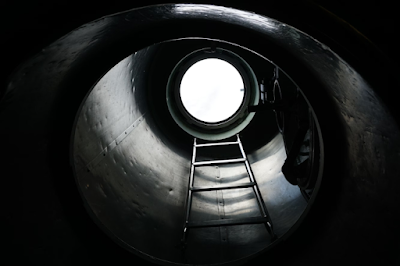--AD--
Confined space rescue (CSR) is an intricate endeavor requiring special training and expertise from team of people. They must understand both the physical and psychological effects associated with the operations as well as be prepared for any unexpected emergencies that might arise during rescues.
Safety professionals cannot rely on local fire departments to perform rescues due to their slow response time and limited knowledge of confined areas. Instead, companies should devise their own plans, conduct regular drills in-house, and learn about the following professional services.
Technical Rescue
This operation extends the capabilities of fire and rescue services beyond their normal procedures. Specialized teams trained in technical rescue practices such as CSR, high/low angle rope rescue, trench/excavation rescue, and structural collapse shoring comprise this branch of emergency response professionals such as fire fighters, law enforcement officers, and emergency medical technicians.
A confined space is considered a dangerous environment where oxygen may be deficient, the atmosphere could be flammable or toxic, and entry and exit are essential in order to remain safe and exit should not take place properly. According to estimates, between 53 deaths and more injuries result from inadequate confined space entry programs each year.
CSR is an integral component of risk management programs and requires highly specialized equipment in order to safely perform this task. Common examples of equipment are rescue bags, baskets, airbags, class 3 harnesses, air compressors, heavy lifting tripod and winch, compressed air hoses, supplied air breathing apparatuses, atmospheric monitoring devices, and communication devices.
One of the key aspects of CSR is assessing entry and exit points to identify any potential hazards present and to ascertain which equipment will be necessary. A thorough hazard assessment must also be conducted before confined space rescue is executed, in order to identify sources of energy as well as any possible engulfment hazards. Once this fundamental process has been completed, an entry supervisor can issue permission to enter the space.
Ventilation
When someone becomes trapped in a confined space, it is crucial that rescue is attempted as quickly as possible. Otherwise, oxygen deprivation could make breathing impossible, necessitating immediate intervention from trained teams that provide adequate oxygenation until CSR is possible.
Importantly, ensuring the entry and exit points to confined spaces remain free from obstruction by fixtures or equipment that could impede rescue efforts is also key. Furthermore, an authorized manager should periodically inspect these spaces to make sure they remain safe for people to enter.
Operations from confined spaces can be hazardous and require trained professionals, making it imperative that a plan be created prior to entering any dangerous workplaces that require permits. According to OSHA requirements (seen here), companies should establish such plans prior to permitting workers into potentially risky workspaces.
A well-thought-out CSR plan should include procedures for emergency rescues as well as a list of equipment and personnel necessary to carry them out, with at least annual updates. In addition, proof should be presented that regular drills on emergency procedures have taken place.
Lockout/Tagout
Lockout/tagout procedures are an integral component of CSR plans and should include procedures for stopping machinery and isolating equipment to control hazardous energy. This process also entails placing and removing locks and tags - usually to identify who placed and removed them, and to indicate why access was granted (repair, maintenance, etc.). In addition, termination permits should also be included as part of this procedure.
If the confined space is safe, an entry plan should include having all emergency response personnel present and ready. This means having a way of calling 9-1-1 and providing information about it (such as street and building numbers) so emergency responders can quickly be sent to the scene.
Untrained or poorly equipped would-be rescuers can often become victims during confined space emergencies. An estimated 60 percent of deaths result from this type of incident (source: https://www.cdc.gov/niosh/docs/86-110/default.html) oftentimes these incidents involve supervisors or senior personnel who should know better. Thus it is crucial that an effective lockout/tagout plan be put in place that only allows trained and authorized individuals access to dangerous machinery or equipment.
Retrieval
Emergency personnel face the challenge of quickly recognizing when something is amiss; the sooner the better their chance is of saving lives. To do so quickly and alert those outside the confined space that someone needs help; once an alert has been given by workers in a confined space about potential risk, teams can be sent immediately to aid the individual or persons trapped therein.
A well-executed and well-practiced response can guarantee that a CSR is fast, safe, and efficient. Achieving this necessitates the implementation of an effective plan, ensuring that all essential equipment is readily available. Furthermore, rescuers must be thoroughly trained for their respective roles and possess an understanding of any potential hazards within specific confined spaces.
An effective CSR plan must cover everything from personnel requirements and necessary supplies to the speed and safety of the rescue. By doing so, it ensures a swift and safe rescue, minimizing the risk to human lives.



Comments
Post a Comment
Important - If you ask a question make sure you tick the "Notify Me" box below the comment form to be notified of follow up comments and replies.